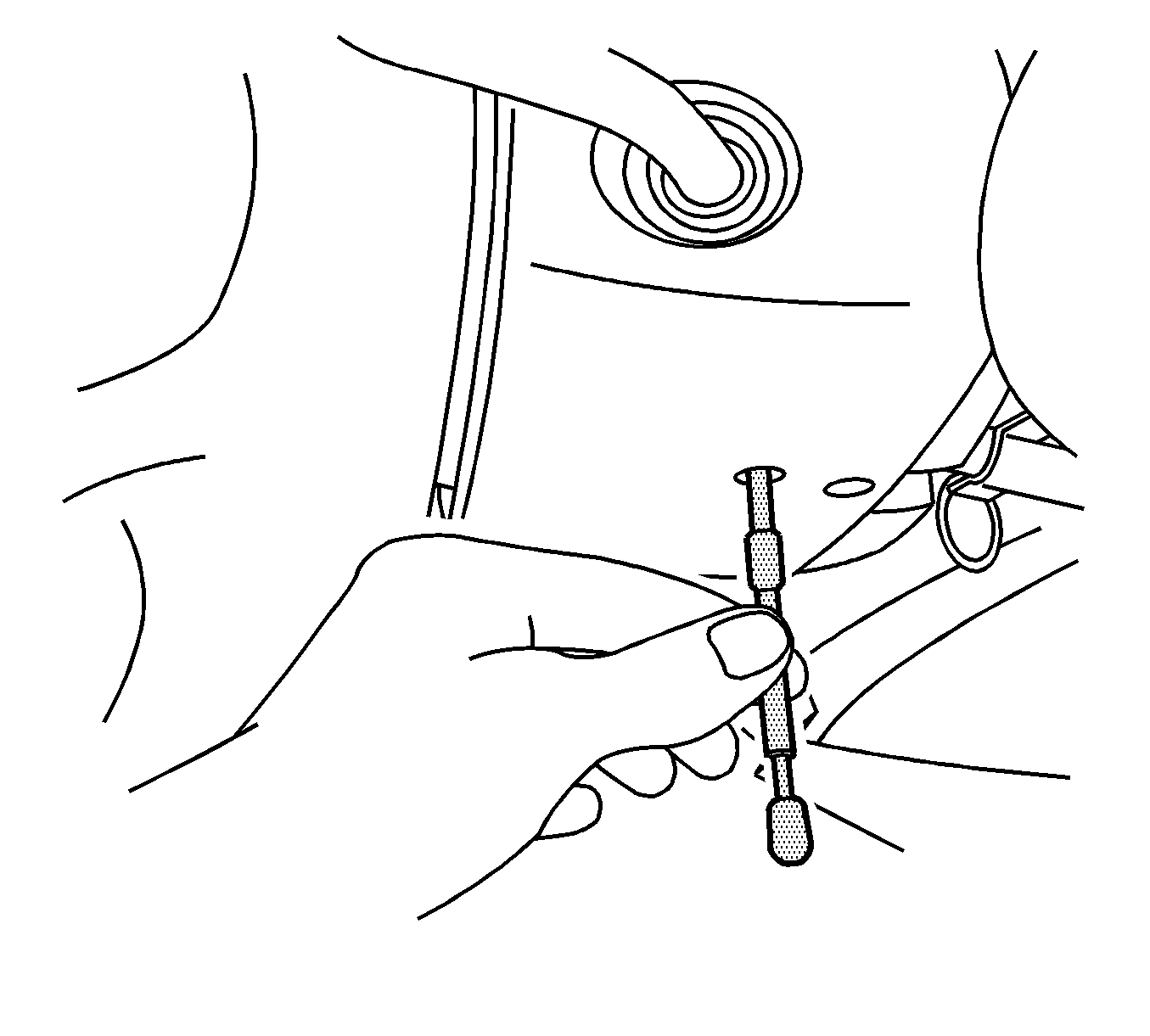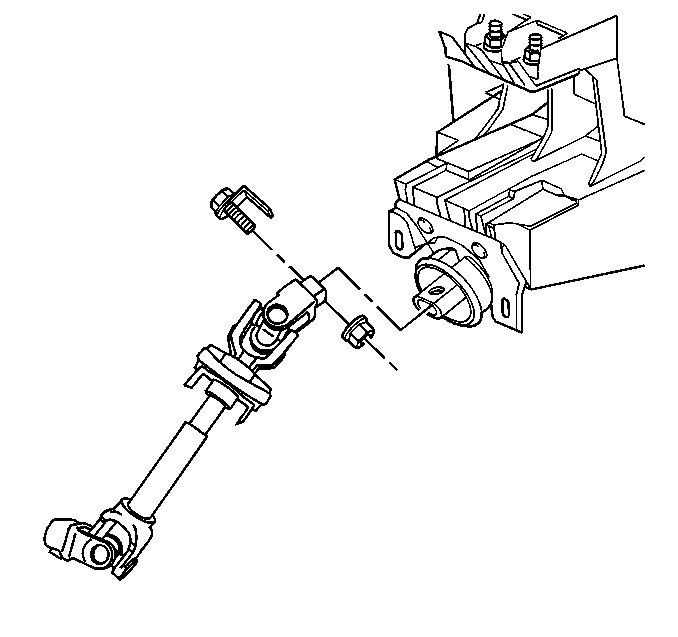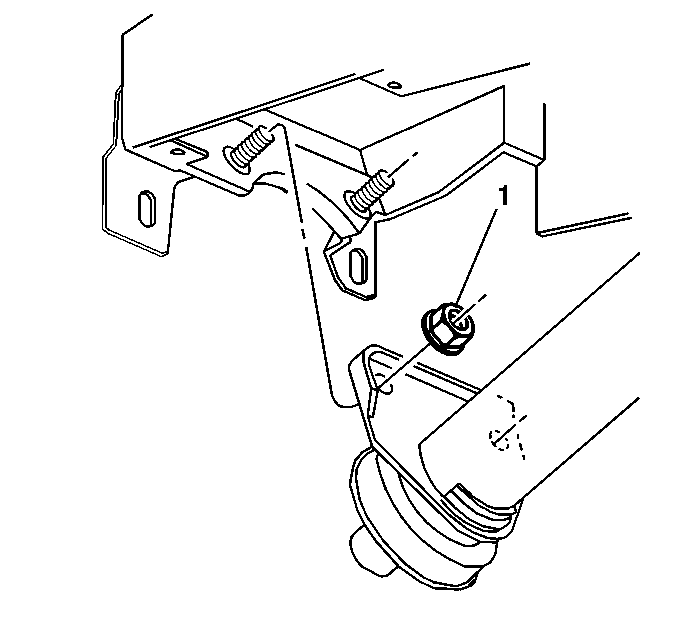Tools Required
| • | J 41352 Modular Column Holding Fixture |
| • | J 42640 Steering Column Anti-rotation Pin |
Removal Procedure
- Disable the SIR system. Refer to SIR Disabling and Enabling in SIR.
- Install J 42640 into the lower steering column trim cover access hole in order to lock the steering column.
- Remove the steering wheel. Refer to Steering Wheel Replacement .
- Remove the knee bolster. Refer to Knee Bolster Replacement in Instrument Panel, Gages, and Console.
- Remove the upper pinch bolt and nut from the intermediate shaft.
- Disconnect the steering column from the intermediate shaft.
- Disconnect the steering column electrical connectors.
- Remove the lower mounting nuts (1) from the steering column.
- Support the steering column.
- Remove the upper mounting nuts (1) from the steering column.
- Remove the steering column.
- Install the steering column onto J 41352 .
Caution: Refer to SIR Caution in the Preface section.

Notice: The wheels of the vehicle must be straight ahead and the steering column in the LOCK position before disconnecting the steering column or intermediate shaft from the steering gear. Failure to do so will cause the SIR coil assembly to become uncentered, which may cause damage to the coil assembly.
Notice: Once the steering column is removed from the car, the column is extremely susceptible to damage. Dropping the column on its end could collapse the steering shaft or loosen the plastic injections which maintain column rigidity. Leaning on the column could cause the jacket to bend or deform. Any of the above damage could impair the column's collapsible design. If it is necessary to remove the steering wheel, use only the specified steering wheel puller. Under no conditions should the end of the shaft be hammered upon as hammering could loosen plastic injections which maintain column rigidity.



Important: Stabilize the studs in order to remove the nuts securing the steering column to the instrument panel.

Installation Procedure
- Remove the steering column from J 41352 .
- Install the steering column.
- Install the lower mounting nuts to the steering column.
- Install the upper mounting nuts (1) to the steering column.
- Connect the steering column electrical connectors.
- Connect the intermediate steering shaft to the steering column.
- Install the upper pinch bolt to the intermediate steering shaft.
- Install the knee bolster. Refer to Knee Bolster Replacement in Instrument Panel, Gages, and Console.
- Install the steering wheel. Refer to Steering Wheel Replacement .
- Remove J 42640 from the steering column.
- Enable the SIR system. Refer to SIR Disabling and Enabling in SIR.

Caution: In order to ensure the intended function of the steering
column in a vehicle during a crash and in order to avoid personal injury to
the driver, perform the following:
• Tighten the steering column lower fasteners before you tighten
the steering column upper fasteners. Failure to do this can damage the steering
column. • Tighten the steering column fasteners to the specified torque.
Overtightening the upper steering column fasteners could affect the steering
column collapse.
Notice: If a service replacement steering column is being installed, do not remove the anti-rotation pin until after the steering column has been connected to the steering gear. Removing the anti-rotation pin before the steering column is connected to the steering gear may damage the SIR coil assembly.
Notice: The steering column should never be supported only by the lower support bracket. Damage to the lower support could result.
Notice: Use the correct fastener in the correct location. Replacement fasteners must be the correct part number for that application. Fasteners requiring replacement or fasteners requiring the use of thread locking compound or sealant are identified in the service procedure. Do not use paints, lubricants, or corrosion inhibitors on fasteners or fastener joint surfaces unless specified. These coatings affect fastener torque and joint clamping force and may damage the fastener. Use the correct tightening sequence and specifications when installing fasteners in order to avoid damage to parts and systems.
Tighten
Tighten the nuts to 27 N·m (20 lb ft).

Tighten
Tighten the nuts to 27 N·m (20 lb ft).

Tighten
Tighten the bolt to 47 N·m (35 lb ft).

